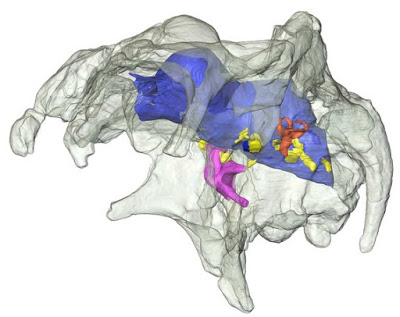
The topic of preprints for paleontologists has gotten a nice flurry of discussion this week, thanks to a blog post by Liz Martin-Silverstone. Preprints, for those who are not familiar, are non-final and unpublished versions of a manuscript made available online prior to formal publication. The reasons to do so are many, including solicitation of comments from interested parties, establishing priority on a particular discovery, or providing a citeable unit for one’s colleagues. Of course, there are also some concerns, such as the wisdom of circulating potentially unreviewed materials, changes between manuscript submission and publication, possibility of ‘claim jumping’ (both by and against preprint authors), and more. All of these are discussed by Liz and the comment thread at her blog post, but something struck me during this discussion.
Namely, we’ve had the discussion before, concerning conferences, conference presentations, conference abstracts, and citation/discussion of these abstracts. Within paleontology, it is not uncommon to read and cite relevant conference abstracts if a more formal paper has not yet followed or will not follow. There is some debate about whether or not this is a good thing, but in my view it can be a helpful way to credit work when other types of citation are not possible. That’s not dissimilar from the situation for preprints.
So, I wanted to expand upon one particular thought I had:
Is posting a preprint substantively different from giving a conference presentation or publishing a conference abstract?
I would argue that no, it is not, in most respects. Let’s look at various concerns about preprints, to see how they compare with conference presentations and abstracts. (this list is quoted and paraphrased from Liz’s original post, so I will be brief)
Concerns About Preprints (Compared to Concerns About Conference Presentations and Abstracts)
Preprints: “Someone could steal my work.”
Yep, applies to conferences, too. Or any other time someone muses anything out loud or online.
Preprints: “But what about all the mistakes?”
Yep, applies to conference presentations and abstracts, too.
Preprints: “Why would a journal publish something already online?”
Reputable journals are generally OK with presenting something at a conference, with which there is an associated abstract. Preprints really shouldn’t be much different.
Preprints: “Why not just wait for the final paper instead of an unformatted manuscript?”
Let’s rephrase that: “Why not just wait for the final paper instead of presenting at a conference?” The way these questions are at odds with scientific discourse should be apparent.
Preprints: “[Work] in preprints is not peer-reviewed, or edited, and some people have concerns that any incorrect information will be propagated.”
Conference presentations and abstracts are unreviewed also, except at the most basic levels.
Preprints: “But how do I know what happened to the preprint afterwards?”
Conference abstract volumes are scattered with the bones of unfinished or unpublished projects. And in cases where something was eventually published, it is actually pretty easy to draw a link between the conference title, abstract, and the final paper. I have faith that my fellow scientists can do the same.
In other words, I see few essential differences between conference abstracts/presentations and preprints for unpublished papers. Both have their issues, but both also have (potential, and considerable) advantages. I worry that we are so concerned about possible (but rare) worst-case scenarios that little change happens within the profession.
Considering our field’s long history of conferences and conference abstract volumes touting unpublished work, are preprints really that radical of a step?
Note: The above post is reprinted from materials provided by Public Library of Science.










